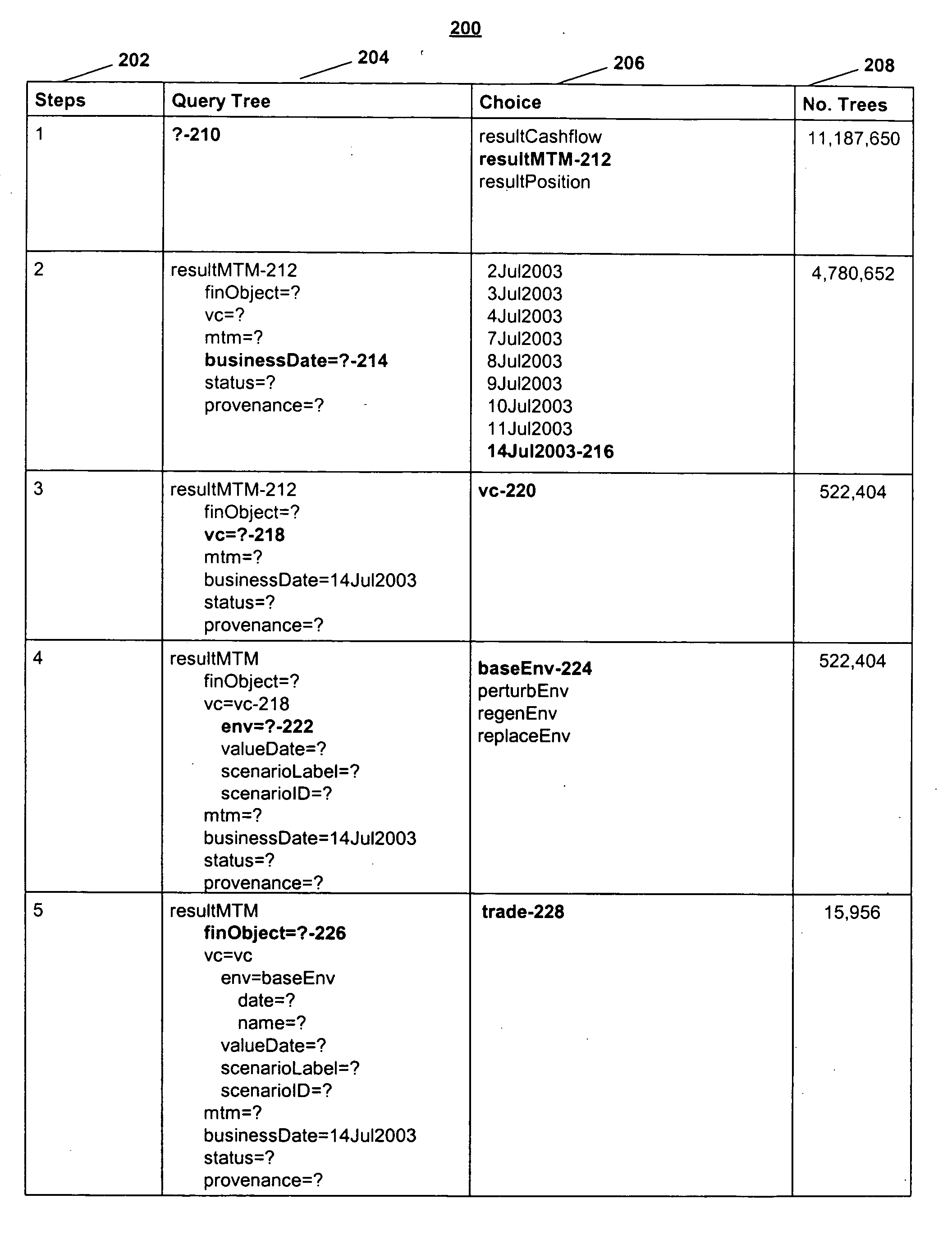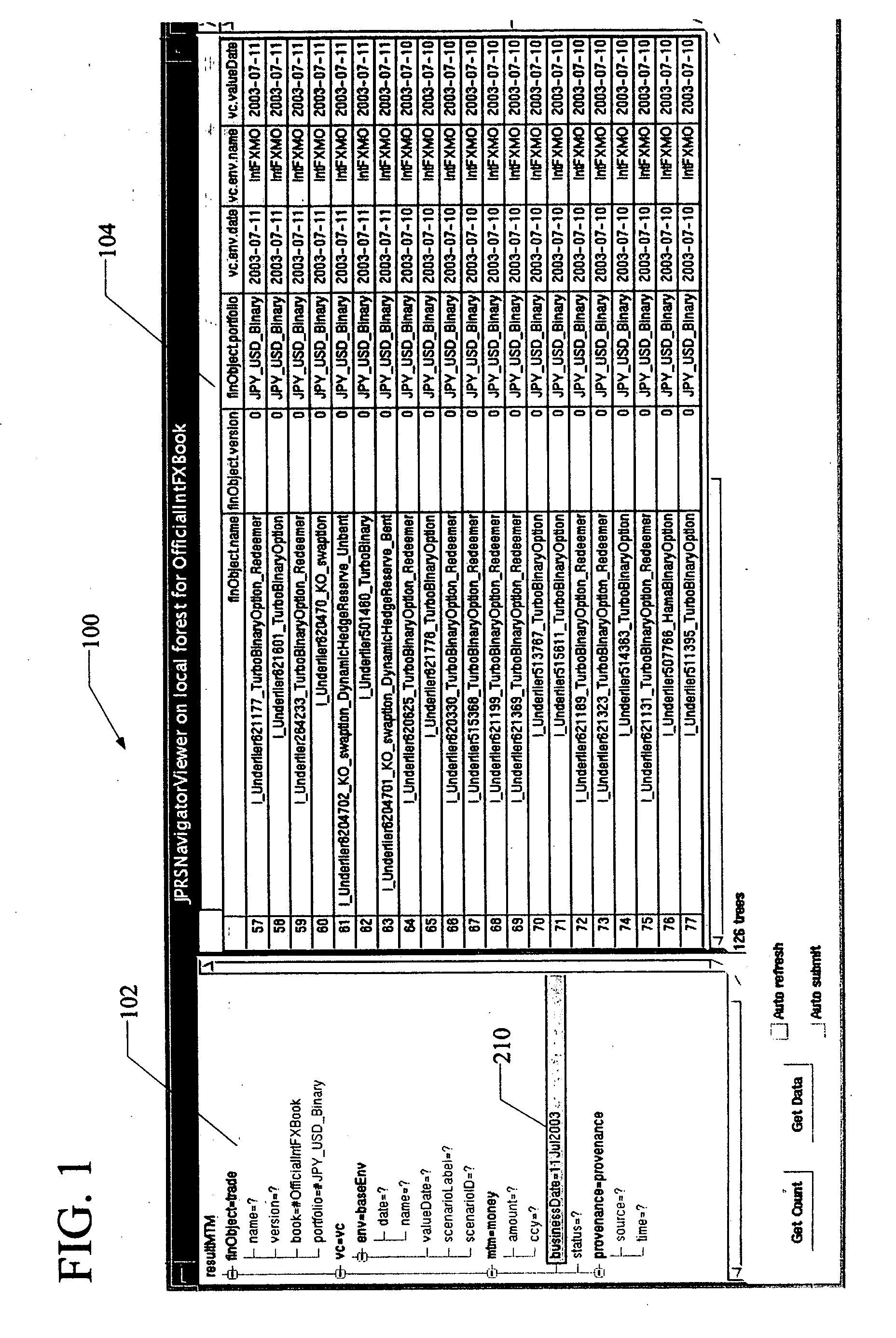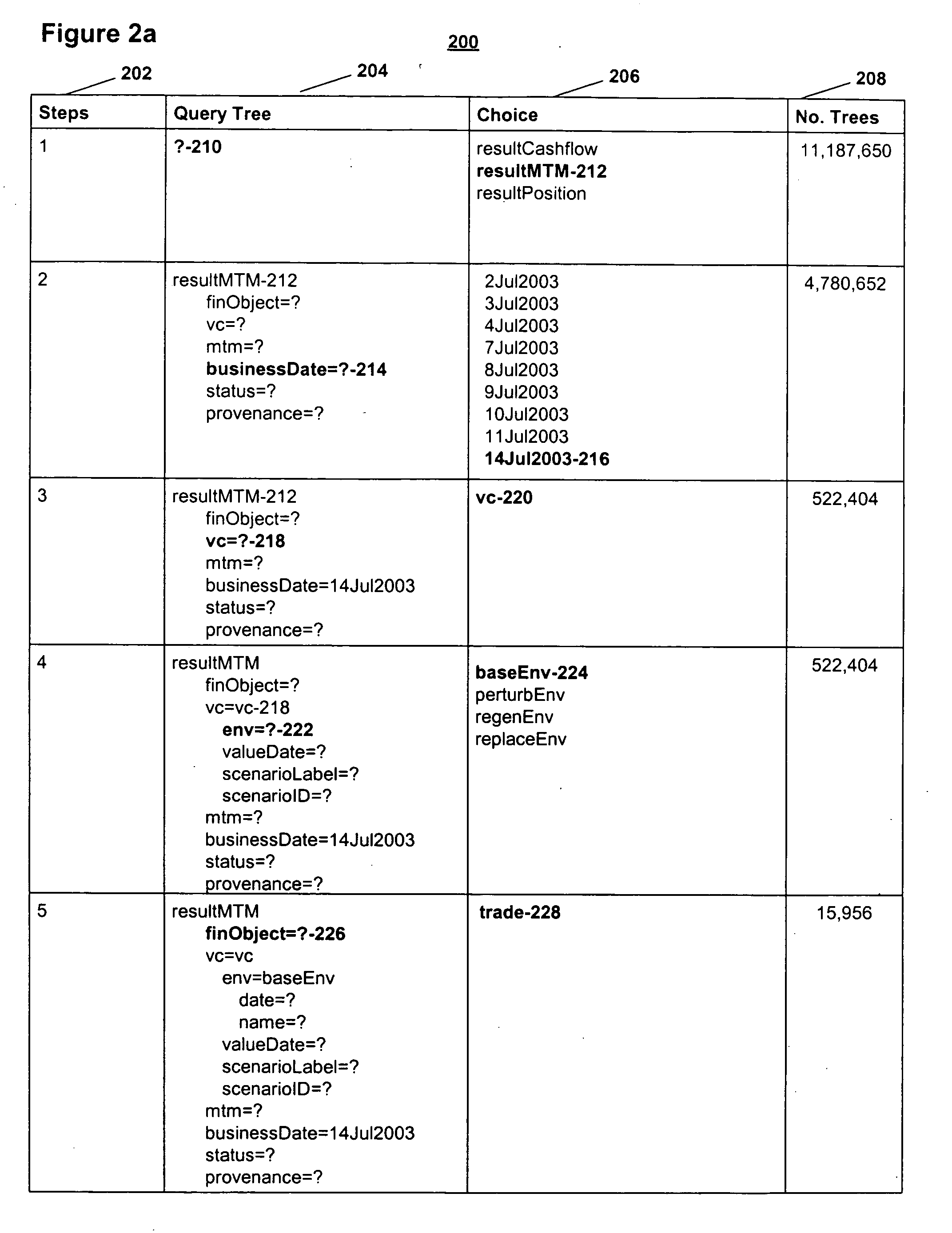Update of a tree-based database
a tree-based database and database technology, applied in the field of database, can solve the problems of inability to easily lend itself to representing collections of data with diverse structures, and inability to provide a unified search space for query and aggregation, etc., to achieve simple external interface and facilitate access
- Summary
- Abstract
- Description
- Claims
- Application Information
AI Technical Summary
Benefits of technology
Problems solved by technology
Method used
Image
Examples
case 1
Update: Use Case 1
For purposes of describing this use case scenario, assume a database containing a collection of tree data structures. Also assume that the constraint pane 102 (FIG. 1) contains the query tree shown in FIG. 14 so as to isolate a particular subset of trees in the collection of trees. Node values for the isolated subset of trees are shown in Table 3 below, which reflects the data that would be shown in the data pane 104 of FIG. 1. (It should be noted that the first row of each of Tables 3-10 indicate parent nodes and their corresponding constrained values. The second rows of each of Tables 3-10 indicate child node names of the parent nodes immediately above them. Rows three and greater in Tables 3-10 each indicate a tree having values at the child nodes indicated in the second row of the table.
TABLE 3finObject =curve =point =spec =delta =tradeirCurvecurvePointperturbationSpecmoneynameccymatdiramtamtTrade1EUR1YUP1+25Trade1EUR2YUP1+20Trade1EUR3YUP1+05Trade1EUR1YDN1−2...
case 2
Update: Use Case 2
Use Case 1 dealt with updating a category of data, or a set of trees having one or more common characteristics. In contrast, Use Case 2 deals with updating a single tree in a forest. Performing a single tree update is no different than performing a group update, except that the query tree must be more specialized to focus in on only one tree in the database. Thus, a more specific query tree is generated using a mask having more nodes with undefined values.
For example, assume that the “new” data to be inserted into the database is as shown in Table 9, and that the current state of the relevant part of the database is as shown in Table 7.
TABLE 9finObject =curve =point =spec =delta =tradeirCurvecurvePointperturbationSpecmoneynameccymatdiramtamtTrade2EUR3YUP5−29
In order to update properly the database with the data in Table 9, a query tree must be generated that would identify only the tree described at the last row of Table 7. A mask that would produce such a qu...
PUM
 Login to View More
Login to View More Abstract
Description
Claims
Application Information
 Login to View More
Login to View More - R&D
- Intellectual Property
- Life Sciences
- Materials
- Tech Scout
- Unparalleled Data Quality
- Higher Quality Content
- 60% Fewer Hallucinations
Browse by: Latest US Patents, China's latest patents, Technical Efficacy Thesaurus, Application Domain, Technology Topic, Popular Technical Reports.
© 2025 PatSnap. All rights reserved.Legal|Privacy policy|Modern Slavery Act Transparency Statement|Sitemap|About US| Contact US: help@patsnap.com



